[/caption]
Voyager 1 is in uncharted territory. The long-lived spacecraft has entered a new region of space that lies between where our solar system ends and where interstellar space begins. This area is not a place of sightseeing however, as a NASA press release referred to it as a kind of “cosmic purgatory.”
Here, the solar winds ebb somewhat, the magnetic field increases and charged particles from within our solar system – is leaking out into interstellar space. This data has been compiled from information received from Voyager 1 over the course of the last year.
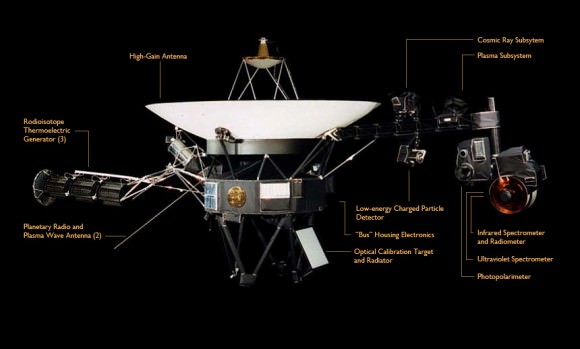
“Voyager tells us now that we’re in a stagnation region in the outermost layer of the bubble around our solar system,” said Ed Stone, Voyager project scientist at the California Institute of Technology in Pasadena. “Voyager is showing that what is outside is pushing back. We shouldn’t have long to wait to find out what the space between stars is really like.”
Despite the fact that Voyager 1 is approximately 11 billion miles (18 billion kilometers) distant from the sun – it still has not encounter interstellar space. The information that scientists have gleaned from the Voyager 1 spacecraft indicates that the spacecraft is still located within the heliosphere. The heliosphere is a “bubble” of charged particles that the sun blows around itself and its retinue of planets.
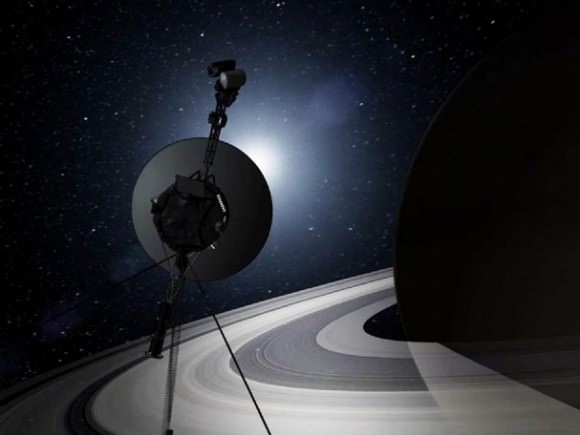
The latest findings were made using Voyager’s Low Energy Charged Particle instrument, Cosmic Ray Subsystem and Magnetometer.
Experts are not certain how long it will take the Voyager 1 spacecraft to finally breach this bubble and head out into interstellar space. Best estimates place the length of time when this could happen anywhere from the next few months – to years. These findings counter findings announced in April of 2010 that showed that Voyager 1 had essentially crossed the heliosphere boundary. The discoveries made during the past year hint that this region of space is far more dynamic than previously thought.
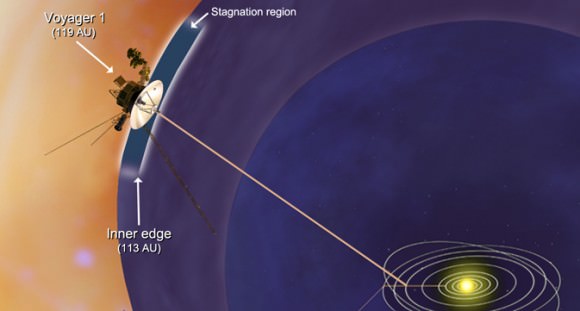
The magnetometer aboard Voyager 1 has picked up an increase in the intensity of the magnetic field located within this “stagnation field.” Essentially the inward pressure from interstellar space is compressing the magnetic field to twice its original density. The spacecraft has also detected a 100-fold increase in the intensity of high-energy electrons diffusing into our solar system from outside – this is yet another indicator that Voyager 1 is approaching the heliosphere.
The interplanetary probe was launched from Cape Canaveral Air Force Station’s Space Launch Complex 41 (SLC-41) on Sept. 5, 1977, Voyager 1’s sister ship, Voyager 2 is also in good health and is about 9 billion miles (15 billion kilometers) from the sun (it too was launched in 1977). The spacecraft itself was built by NASA’s Jet Propulsion Laboratory in Pasadena, Calif.
“Voyager is a mission of discovery and it’s at the edge of the solar system still making discoveries,” said Stone said. “The stagnation is the latest in the whole journey of discovery. We are all excited because we believe it means we’re getting very close to boundary of heliosphere and the entry into interstellar space.”
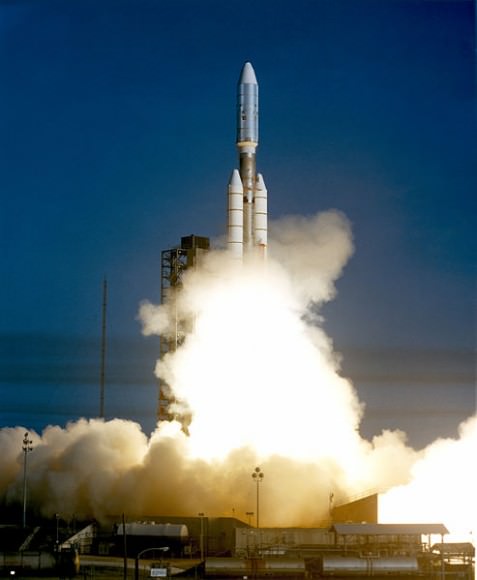

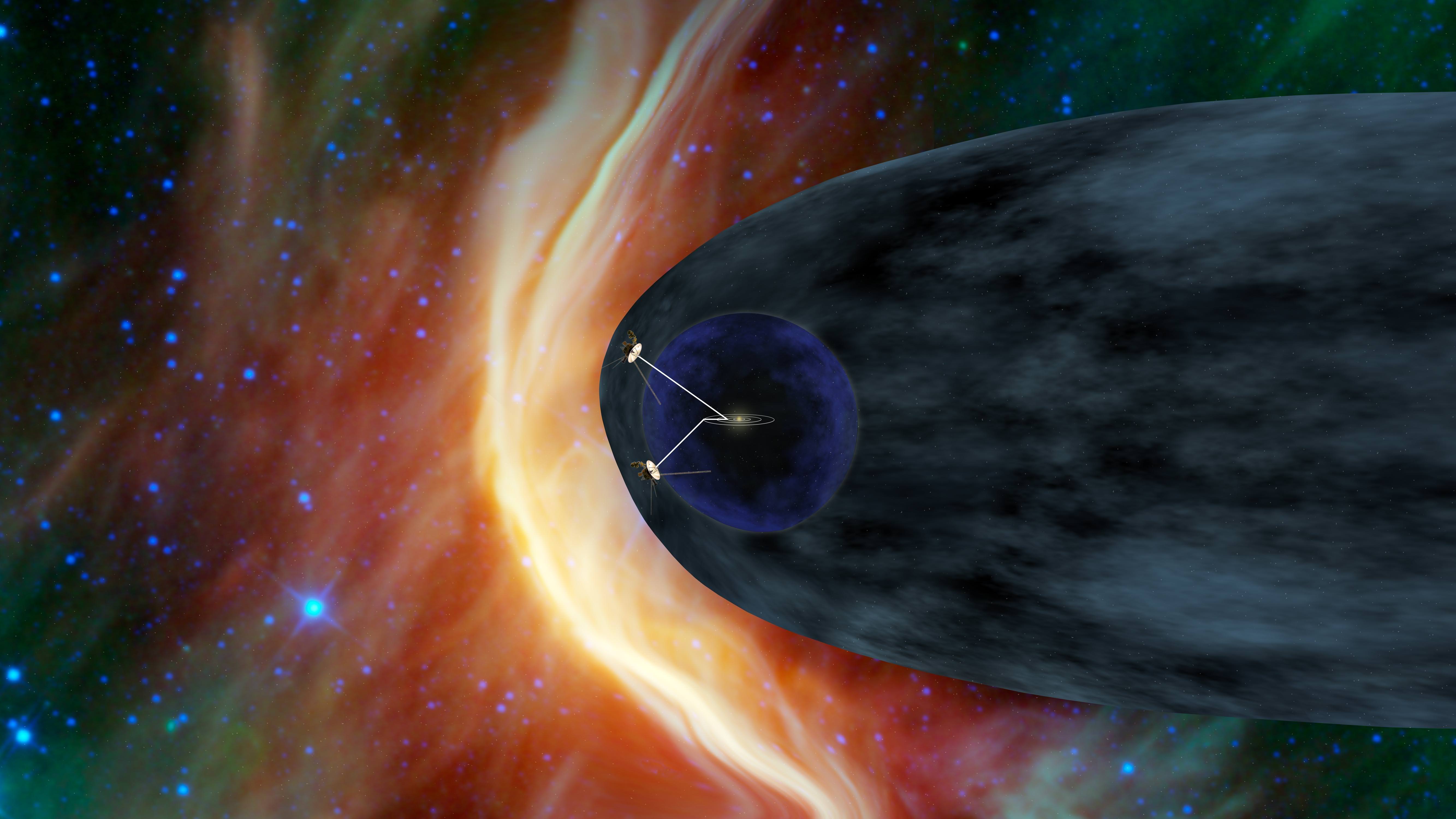
It just continues to wow me to think that I was in elementary school reading about all of their recent discoveries, and here they are still taking us back to school!
“Experts are not certain how long it will take the Voyager 1 spacecraft to finally breech this bubble and head out into interstellar space.”
Unless you mean that Voyager 1 is going to give birth to the bubble buttocks-first, the word you want here is “breach.”
Cool. I wonder how much longer this thing is going to last.
a couple of years, as the Director in charge at JPL stated in an interview (YouTube)
I believe we lost contact with the Pioneer probes or at least that is what I have read.
Actually, there are too many syntax errors to mention. At least try to get quotes correct.”said Stone said”. Apparently all degrees to not confer the same credentials.
As for Vogager, it’s fast and it’s heading out. Is it fast enough to keep going? Is it on a sweeping elongated orbit of the sun or is it really going relatively straight? Is there anything in its future path?
If you’re going to rip the article for errors, why not proof-read your own post? It’s an astronomy blog, not a literature blog, does it really matter?
Ditto!!!
Universe Today, it seems to me, presents itself as more of an online magazine than a blog. With the contributors’ credentials listed after each article (much as you’d find in a print publication), I expect that they’d be a bit more careful in proofreading (and more adept in their command of the language). It only matters if you value skilled writing. If you don’t, then it doesn’t. Don’t get me wrong–I applaud the effort. I just wish there was a little more attention to detail. As it is, many UT articles come off as sloppily/hastily written to me.
In defence of the author Jason Rhian, I think that most writers welcome constructive criticism and the pointing out any typographical/grammatical errors in their writing, but certainly not when you insult them by questioning their credentials — I would not have had any business as a freelance proofreader if I had done that!
Please remember this: Nobody is perfect; everybody makes mistakes.*
*(Occasionally, even I make the odd mistake – but only after I’ve had one too many beers!) 😉
I agree–and I’m fairly impressed overall with the credentials of UT contributors. It just seems to me that not as much care is taken with proofreading as I’d like. Perhaps their deadlines are a bit too restrictive and they find themselves having to bang out articles too quickly for careful proofing. It all gets down to what’s being given priority, quantity or quality. Good articles, for the most part, but not quite at the level of quality that would be demanded in a print publication.
If it passes throw the bubble and goes on to the interstellar space, and it happens to be that we don’t receive any signals back, then we will know that we have been missing out on the outside universe since the very first days of our existence…
I finally get the first picture! It’s both Voyagers with the sun in the centre of the blue sphere and a huge blackish bubble of extended heliosphere beyond that. Bow shock in bright orange. Is it galactic pressure outside that?
Absolutely wonderful!
Michael Edwards
I remember watching this launch in school and dreaming about all the cool stuff it would see in space, I was so envious. Voyager carries the dreams and aspirations of my generation, I hope it goes on and on. I’m looking forward to things is will discover.
The staging of the Voyager’s may be very lucky. Voyager 1 gets into this region as it is still recovering from a prolonged solar minimum. Voyager 2 will get there during a more normal setting.
If they both make it this could be very valuable.
Where is Voyager 1 in relation to the Ort Cloud?
Never mind it has a long way to go.
http://upload.wikimedia.org/wikipedia/commons/9/9f/Solarmap.png
Never mind it has a long way to go.
http://upload.wikimedia.org/wikipedia/commons/9/9f/Solarmap.png